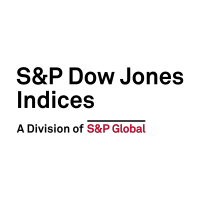How does viewing companies through the prism of price-to-sales influence risk/return? Explore a systematic approach to indexing factors with a focus on valuations with Justin Lowry, President and Chief Investment Officer at Global Beta Advisors and S&P DJI’s Michael Mell.
The posts on this blog are opinions, not advice. Please read our Disclaimers.Examining a Custom Approach to Factors
Commodities Rise with Inflation in July
Has the Illiquidity Trade Run its Course?
A Hypothetical Look at 35 Years of Indexes that “Buy” SPX Options
High-Capacity Construction: The S&P Dividend Growers Indices
Examining a Custom Approach to Factors
Commodities Rise with Inflation in July

The S&P GSCI rose for a fourth consecutive month, by 1.6% in July, as the main positive catalysts of 2021 remained in play. Many individual commodities constrained by supply chain bottlenecks and disruptions continued to be in deficit around the world. Half of the U.S. experienced drought conditions last month, compared to 25% this time last year. Reopening and reflationary demand continued to pick up. Inflation readings were again released higher than expected. Everyone has a story about something being more expensive than it was a year ago. The Fed maintained its dovish supportive posture that inflation is transitory. A concern on market participants’ minds was how disruptive the spread of the Delta variant of COVID-19 might get and if it could cool off the outstanding YTD performance of commodities. Exhibit 1 shows the performance of the S&P GSCI by sector, with Energy and Industrial Metals outperforming YTD and July performance muted overall.

Within Energy, the S&P GSCI Unleaded Gasoline rose 4.54%, beating out heating oil as the top performer in the petroleum complex. Summer driving demand in the northern hemisphere continued to be one of the key drivers for gasoline. The S&P GSCI Natural Gas broke higher by over 7.71% in July. The U.S. Energy Information Administration reported that Natural Gas makes up 40% of annual U.S. electrical generation. It is a key commodity to watch in the global energy transition, as it is viewed as a less carbon intensive commodity than other, higher emitting ones. Another interesting note from the report showed renewables now make up 21%, beating out nuclear and coal-based generation for the first time ever. The green transition continues to be one of the key thematic stories inspiring commodity price action.

The S&P GSCI Nickel led the way for the metals, rising 7.34% on the month. Mostly used to create stainless steel, Nickel is also used extensively in electric vehicles. Most electric vehicle metals edged higher in July, as new competitors to Tesla drove enthusiasm in the space. Preorders for new electric vehicles exploded, with many people willing to wait to own a new electric vehicle as opposed to paying current inflated used car prices. This helped to push the S&P GSCI Copper up 3.59% for the month. Four times as much copper is needed in the average electric vehicle as is needed in the average internal combustion engine vehicle. Copper was also influenced from the supply side with the potential for a strike coming as labor talks broke down at BHP’s Escondida copper mine in Chile, the world’s largest copper mine.
Across Agriculture & Livestock, the Softs stood out. The S&P GSCI Coffee sprinted past the rest, rising 12.04% due to extreme frost conditions, erasing 10% of Brazil’s crop production for the year. Brazil is the number one coffee producer in the world, with a 40% share of global output, double that of the next highest producer. The S&P GSCI Corn fell the most, down 8.72% as the highly liquid CME July contract expired, with traders taking profit or moving exposure to the December contract. The S&P GSCI Lean Hogs rose another 1.20% in July, bringing the YTD performance to an impressive 29.24%. No matter if the pandemic gets worse or tapers off, everyone still wants to bring home the bacon.
The posts on this blog are opinions, not advice. Please read our Disclaimers.Has the Illiquidity Trade Run its Course?
S&P Global Market Intelligence’s Lynn Bachstetter explores whether illiquidity still has a place in insurance investments with S&P Global Ratings’ Carmi Margalit, F&G’s Leena Punjabi, and BlackRock’s Peter Gailliot.
The posts on this blog are opinions, not advice. Please read our Disclaimers.A Hypothetical Look at 35 Years of Indexes that “Buy” SPX Options

35 Years of Hedging Indices
Below are three Cboe S&P benchmark indices that theoretically “buy “SPX put options as part of their index methodology and have 35 years of back-tested performance history going back to June 30, 1986. As shown below, the three options indices were introduced in either 2008 or 2015, and the data histories before the introductions are back-tested.
- Cboe S&P 500 5% Put Protection Index (PPUTSM) tracks the performance of a hypothetical strategy that holds a long position indexed to the S&P 500 Index and buys a monthly 5% OTM SPX put option as a hedge. The PPUT Index was introduced in 2015.
- Cboe S&P 500 95-110 Collar Index (CLLSM) tracks the performance of a strategy that purchases stocks in the S&P 500 Index, and each month sells SPX call options at 110% of the index value, and each quarter purchases SPX put options at 95% of the index value. The CLL Index was introduced in 2008.
- Cboe S&P 500 Zero-Cost Put Spread Collar Index (CLLZSM) tracks the performance of a hypothetical option trading strategy that 1) holds a long position indexed to the S&P 500 Index; 2) on a monthly basis buys a 2.5% – 5% SPX put option spread; and 3) sells a monthly OTM SPX call option to cover the cost of the put spread. The CLLZ Index was introduced in 2015.
Histogram and Less Tail Risk
The histogram chart shows that the methodology element of theoretically “buying” of puts by the PPUT Index helped lessen the left tail risk when looking at back-tested data over 35 years. The S&P 500 Index had 35 monthly declines of down 6% or more, while the PPUT Index had 18 such declines. There is a hypothetical cost imputed to the Index for the for the paying of premiums for the put options, and the PPUT Index also had fewer monthly gains of more than 4%.

Lower Betas and Standard Deviations for the Indices
In their analysis of potential asset classes for diversification purposes, asset managers may look to see investments with relatively low betas. The table below shows that all three Cboe S&P indices had betas of less than 0.75 over the 35-year period. The three Cboe S&P indices had higher annualized returns than the MSCI EAFE Index, but lower than the S&P 500 Index.

To Learn More
- Please register for Webinar on 35 Years of Options Index Performance on July 28, 2021, featuring four speakers, including Gaurav Sinha, Managing Director, Head of Americas, Global Research & Design, at S&P Dow Jones Indices (S&P DJI)
++++++++++++++++++++
Disclaimer
Options involve risk and are not suitable for all investors. Prior to buying or selling an option, a person must receive a copy of Characteristics and Risks of Standardized Options. Copies are available from your broker or from The Options Clearing Corporation, One North Wacker Drive, Suite 500, Chicago, Illinois 60606 or at www.theocc.com. The CLLSM, CLLZSM, and PPUTSM indexes (the “Indexes”) are designed to represent proposed hypothetical options strategies. The actual performance of investment vehicles such as mutual funds or managed accounts can have significant differences from the performance of the Indexes. Investors attempting to replicate the Indexes should discuss with their advisors possible timing and liquidity issues. Like many passive benchmarks, the Indexes do not take into account significant factors such as transaction costs and taxes. The three Cboe S&P indexes in this blog were announced in either 2008 or 2015 as set forth above. Information presented prior to the announcement dates is back-tested. Back-tested performance is not actual performance, but is hypothetical. A limitation of back-tested information is that it reflects the application of the Index methodology in hindsight. No theoretical approach can completely account for the impact of decisions that might have been made during the actual operation of an index. Cboe Global Indices, LLC calculates and disseminates the Indexes pursuant to an agreement with S&P Dow Jones Indices LLC (“S&P DJI”). CLLSM, CLLZSM, and PPUTSM are service marks of Cboe Exchange, Inc. or its affiliates. S&P®, S&P 500® and SPX® are registered trademarks of Standard & Poor’s Financial Services, LLC (“S&P”) and have been licensed for use S&P DJI and sublicensed by Cboe Exchange, Inc. The S&P 500 and S&P GSCI are products of S&P DJI. Any products (including options) that have the S&P Index or Indexes as their underlying interest are not sponsored, endorsed, sold or promoted by S&P DJI or S&P and neither S&P DJI nor S&P makes any representations or recommendations concerning the advisability of investing in products that have S&P indexes as their underlying interests.
The posts on this blog are opinions, not advice. Please read our Disclaimers.High-Capacity Construction: The S&P Dividend Growers Indices

In our past blog, Introducing the S&P Dividend Growers Indices, we highlighted the key objectives and investment rationale behind the S&P U.S. Dividend Growers Index and S&P Global Ex-U.S. Dividend Growers Index. We showed that companies that have consistently increased dividends over consecutive years displayed greater financial strength through being generally more profitable with less stock price volatility. In addition, we provided evidence that the highest dividend yielders were typically more likely to have earned this accolade through poor recent stock price performance. These same companies subsequently showed a higher tendency to make unfavorable future dividend policy changes.
Simple Selection
The S&P Dividend Growers Indices were designed to take advantage of these findings in a transparent and effective two-step selection procedure.
- Identify the eligible pool of companies that have increased dividends every year
- For at least 10 years in the U.S. and 7 years in the Global ex-U.S. universe
- Remove high-yielding companies that rank in the top 25% of eligible companies
Deliberate Detail
Investability is key. And designing an index with this in mind involves two interlinked considerations:
- Maximizing the potential capacity of any investment strategy that could seek to replicate it; and
- Minimizing the trading costs that may be incurred to ensure the index can be efficiently replicated.
The former involves broadening the selection criteria to expand the total market capitalization selected. The latter involves reducing the total turnover of the index, while ensuring there is sufficient liquidity.
All these elements were carefully considered within the S&P Dividend Growers Indices to improve investability in the following ways.
- Expansive Selection – S&P DJI’s broadest U.S. and Global Ex-U.S. BMI universes were chosen to ensure the widest eligible selection.
- Weighted by Float-Adjusted Market Capitalization (FMC) – FMC-weighted indices have multiple benefits for investability.
- Liquidity is enhanced since index weights are proportionate to the market value of the free-float shares that are available to investors (excludes closely held shares).
- Turnover is limited since index weights do not need to be periodically adjusted (only index reconstitutions impact turnover).
- Capacity is improved by preventing high ownership in any individual company.
- Three-Day Rebalance Window – Reconstitutions only occur annually, and index changes are spread across three consecutive trading days. For those wishing to replicate the index, this reduces market trading on any given rebalance day and therefore lowers market impact costs.
- Buffer Rule on Dividend Yield Screen – To reduce unnecessary turnover, stocks that already exist in the index are only excluded if their yield ranks within the highest 15% (whereas new stocks entering the index are ineligible if they rank in the highest 25%).
- Liquidity Screening – Stocks must satisfy minimum median daily-value-traded thresholds of USD 1 million and USD 0.5 million for the U.S. and Global ex-U.S. indices, respectively. Liquidity buffer rules are also implemented.
Repeatedly Reviewed
Since reconstitutions occur annually, a continual dividend review process is important. Constituents are monitored monthly to allow the index to react to unfavorable dividend policy changes that may signal financial distress. A company may be removed through the monthly dividend review process if it omits a scheduled dividend payment or announces a stop or a reduction to dividend payments.
Evaluating Effectiveness
While rationale and approach are critical, results are equally important. So, how have these indices performed? In the next blog in the series, we will evaluate the historical effectiveness and characteristics of the strategy.
The posts on this blog are opinions, not advice. Please read our Disclaimers.








































